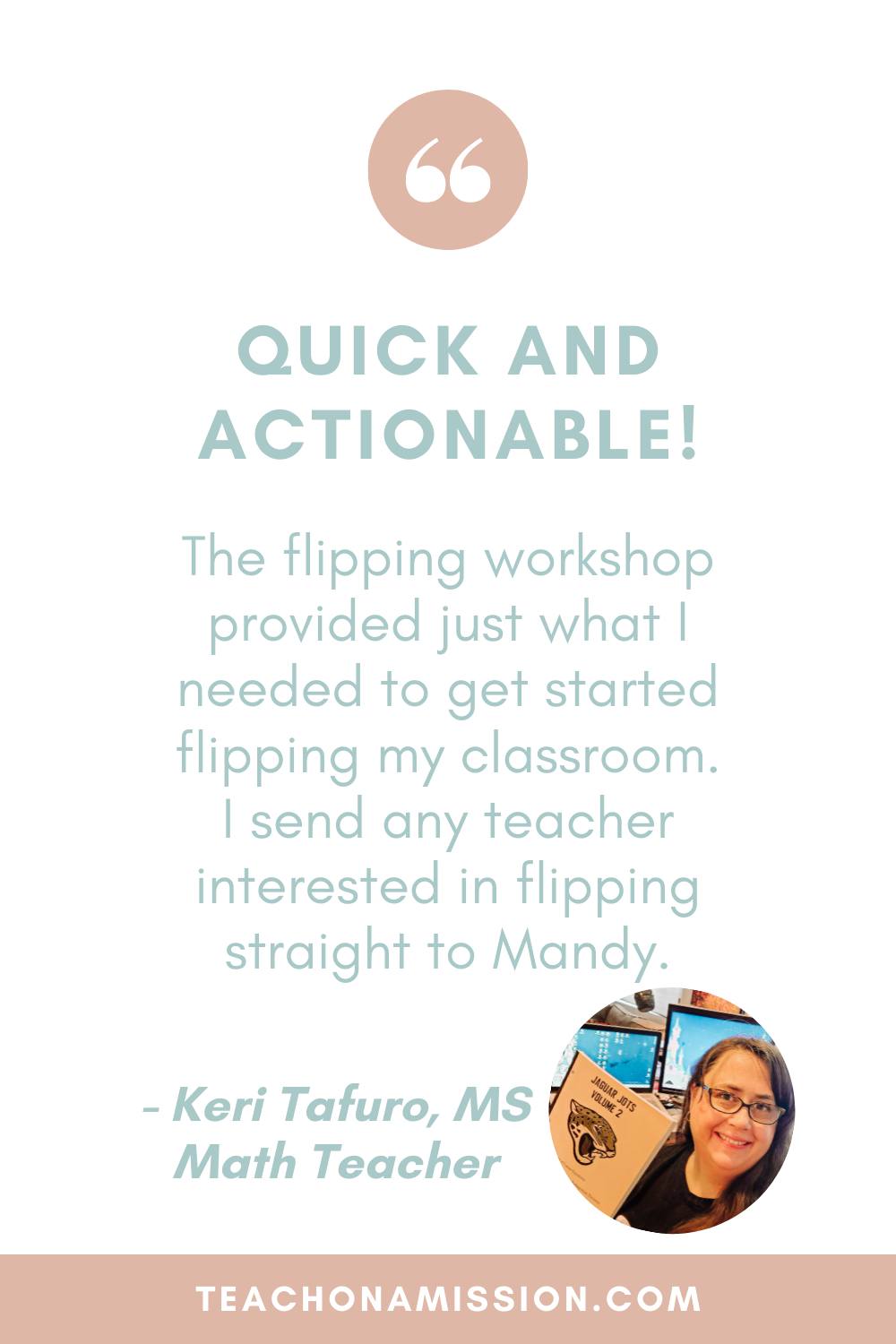What It Looks Like to Put Relationships First
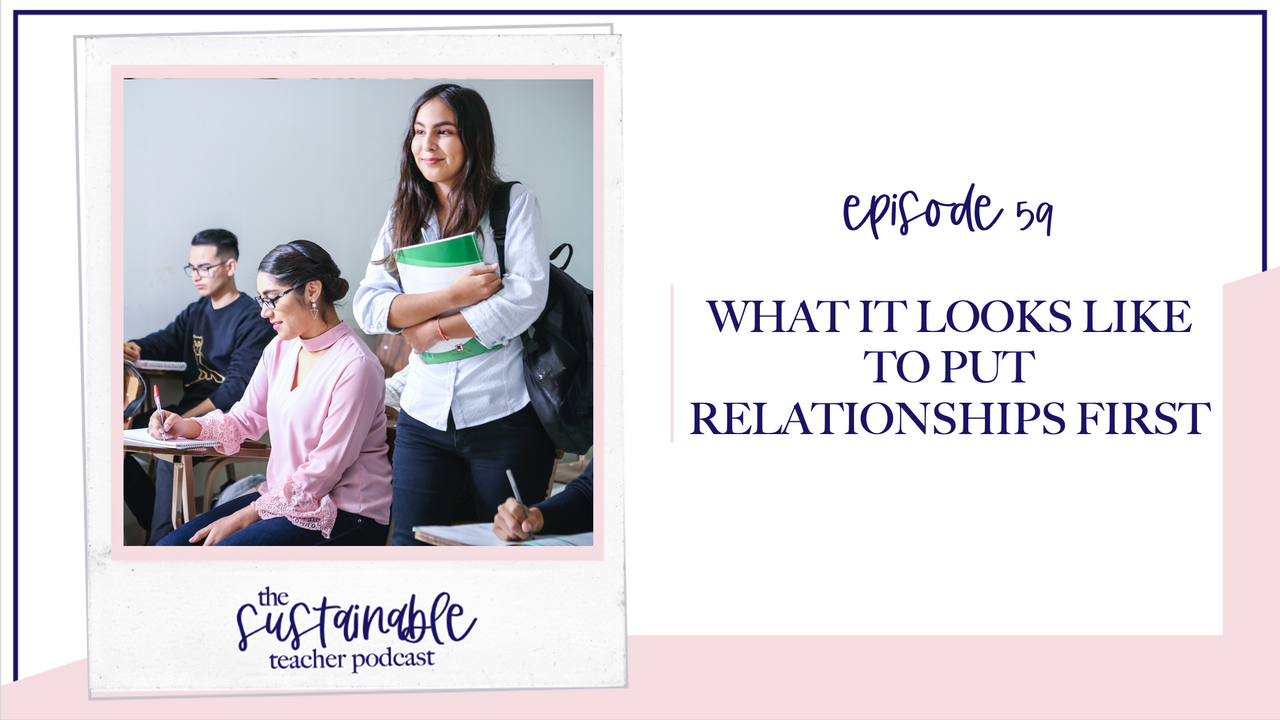
When asking a group of teachers what has the most impact on their students’ performance in their classroom, the resounding answer I’ve heard in my career is without a doubt relationships - building relationships with our students that lets them know we are rooting for them, guiding them, and that allows them to trust us and invest in the course and what we’re asking them to do.
As much as we recognize that relationships have the most powerful impact on moving the needle with our students, all the other aspects of teaching that pile up in a day take precedence over taking the time to build relationships.
Today, I have a proposal on what it could look like to actually make relationship building a top priority. And if there were a calendar of how you spent time in your classroom, this proposal I have for you would allow you to spend more time working one-on-one with your students, and ultimately building relationships than any other item on your docket.
I want to share the best way to streamline the content delivery of your course, what ultimately takes up the most time, am I right?, so that focusing on students and not feeling guilty spending time building relationships with each of them is a real thing that happens in your classroom on a regular basis.
Because here’s the thing. As the teacher in the room, you want to know your students. You’ve felt the pressure of doing everything else other than just getting to know your students, and it’s time that you actually have time to focus on building relationships without feeling like you’re wasting time doing it - without feeling like you’re missing out on pressure time spent on the content.
I can’t wait to let you in on this strategy. Let’s get to it.
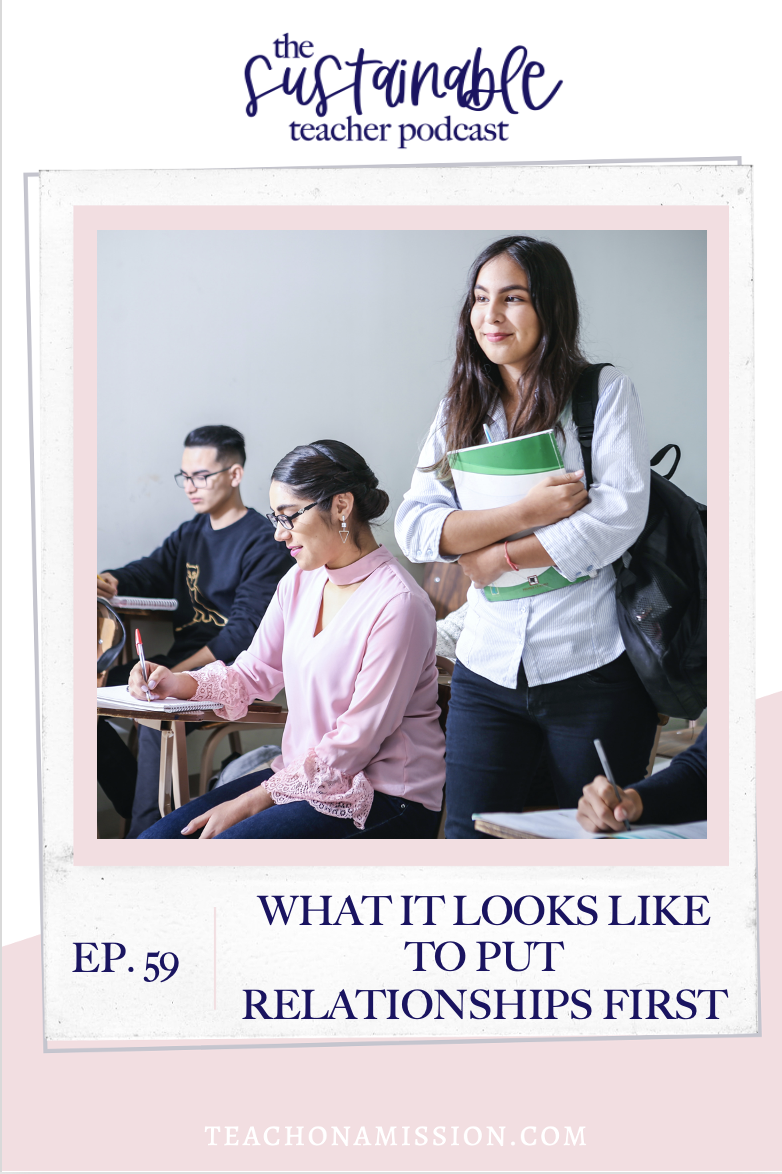
Picture this. Students are walking into your classroom for the beginning of class, you’ve got directions up on the board to get them started for the day. You’re around the room, helping students with various items, and need to start your lesson as SOON as the bell rings or at your allotted time because ain’t nobody got time to waste today. You’ve got big plans and no time to spare.
Then a student walks up to you who has been out for about a week. You feel the stress (both in you and the student) as the student approaches you with all that you both need to do in order to get her caught up. But you have zero time to spare to talk with her right now. Plus that’s a long conversation that needs more time than class can spare. So instead of hearing her out, you have to dismiss her and let her know to, for now, have a seat, and you’ll schedule a time to meet with her outside of class. That student then sits for the rest of the class feeling pretty lost, with no context of what’s going on, and the stress increases as she feels more and more lost.
Here’s another scenario.
You’re handing tests back in your classroom. Students look at their grade on the front of the test, then set it aside waiting for the next thing to do. You notice a particular student who’s grade continues to be dismal at best on test after test, and yet they show no care in the world as they receive another low grade. If you had time, you would sit down with this student, and many others for that matter, to chat with them about their effort and motivation for your class and in life as a whole, finding out what gets them going, what distractions they have in life right now, and how you might be of service in getting them back on track. But that takes time. And you’ve got to use the limited time you have right now just to get through the content, so you don’t have that conversation, telling yourself hopefully you get a few moments to spare in the future to address this kid.
And here’s another scenario.
Students are coming in to your classroom at the beginning of class, and a particular student who is normally on top of her work and reasonably chatty and friendly with her table, doesn’t have her materials prepared for today, she’s also looking very tired, and is avoiding all conversation with students. Over the next few days you notice this behavior and lack of preparation is becoming a trend. You talk with the student in passing, asking where her work is, and asking how she’s doing. But you both know that there’s not enough time for her to answer with more than “I’m fine, just tired.” But it keeps gnawing at you that something more is wrong. You tell yourself you’ll talk after class, but by the time you clean up, chat with other students, and prepare for your next class, your time is up and that student is long gone.
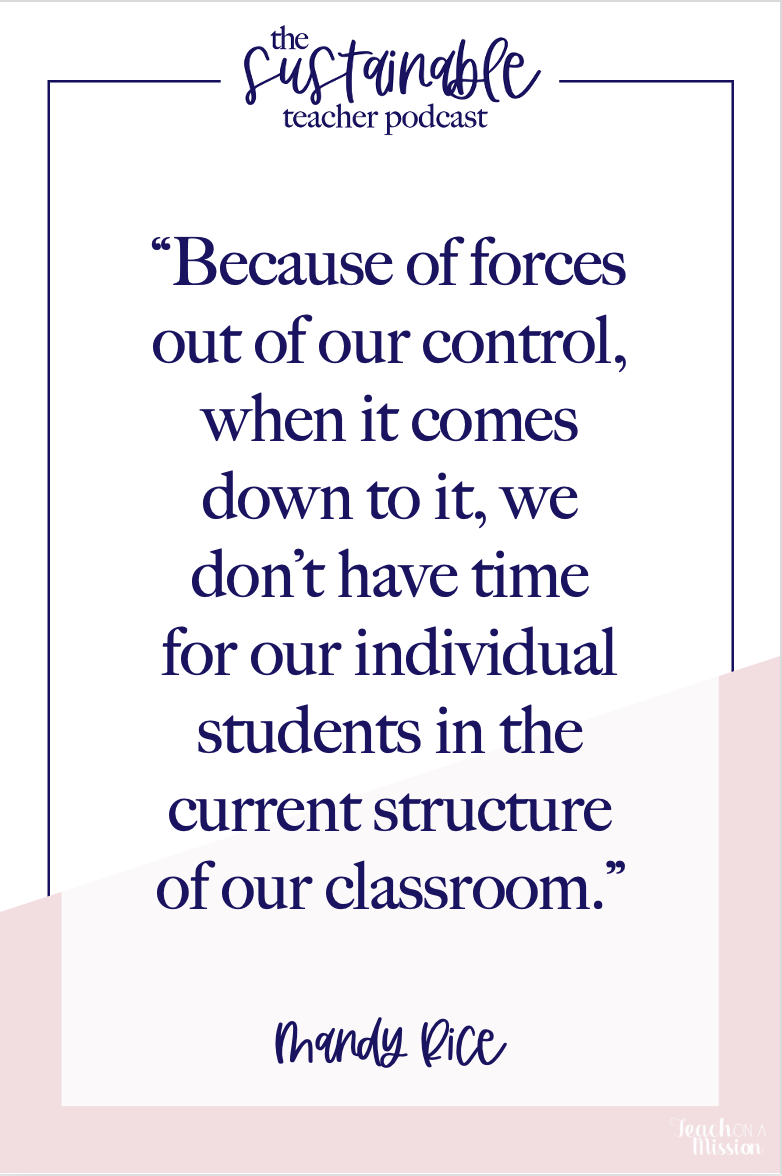
These seemingly small, but common scenarios are ones that we have to brush under the rug in our consciousness as teachers so that we don’t feel the weight of letting kids down in the name of “I don’t have time.”
This is NOT to say that any of this is your fault. Hear me when I say this - in each of these scenarios and many other others exactly like it, you are not at fault. In fact, if you took the time with these students in each of these situations, the rest of class would quickly lose focus and momentum, causing classroom management issues and decreasing student outcomes. You’re quite literally (as are your students) damned if you do and damned if you don’t.
And I don’t know about you, but I’m tired of class time feeling like a mad rush to the finish line without a moment to just be human for a moment. I’m also tired of feeling the guilt and shame if I don’t use absolutely every moment of class time for content specific tasks, as if I’m less than as an educator if I’m not teaching the content.
So what would it look like if we were able to put relationships first in our classrooms? What would it look like if we were able to respond to each of the students in these scenarios without compromising the rest of our students, our lesson plans, or getting the content in front of our students?
Here’s what it would look like… the content would STILL be delivered. Our students would STILL hear and receive the content from us, in a streamlined and accessible format that allowed us to be available and responsive to any of our individual students.
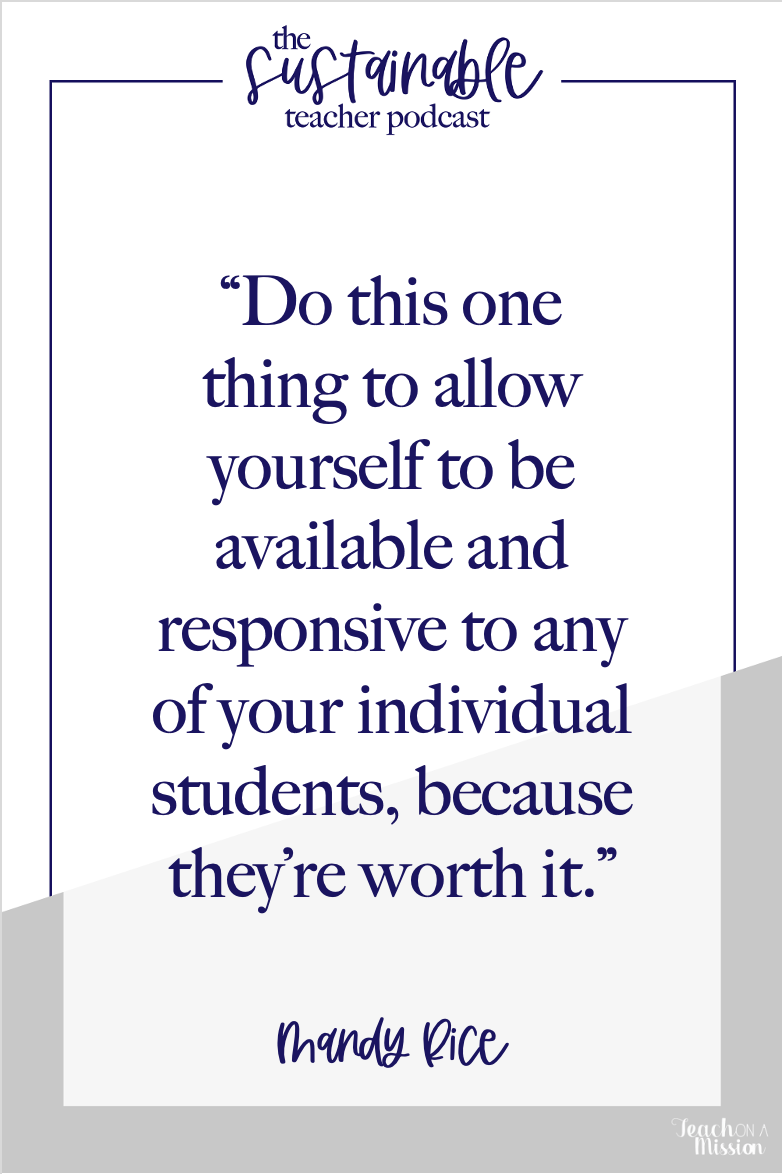
And all it takes is putting your content into a video.
That video is one that your students could watch on their phones while waiting for practice start or one they watch at the start of your class two days per week, which is then time you can focus on conversations with students. The video could be one your students watch in specific stations or centers in your classroom that guide them on what they are to do in the following station with the information they learn.
The possibilities are endless, but the opportunity for your classroom lies in streamlining your content delivery, not tying you down to only be able to deliver said content, and it makes your content accessible to students who may have to miss class, or even be out for some time.
The time it provides in your classroom is so precious. It’s precious time where you could have the hard conversation with a student to let them know they are better than what their effort and performance indicates. You could have the desperate conversation with the student who just needs an ear to vent or explain their home situation to a stable and responsible adult. You could have fun with your students or small groups of them, playing a game, getting to know them better, ultimately allowing you to leverage those relationships for better student investment and, therefore, outcomes.
What you do beyond putting your content into an accessible video format becomes the structural part of what is ultimately your flipped classroom.
I’ve said it before and I’ll say it again, that a flipped classroom (or any classroom for that matter) is more than just it’s videos, more than just it’s content delivery. You have to optimize your class time to be used how you want it to be used, you’ve got to establish some structural necessities to make sure your hard work will pay off and that your classroom is in fact serving students.

That’s why I’ve created the free webinar, 3 Insights to Flipping Your Classroom: What you Need to Know to Make the Most of Class time. It’s a one hour masterclass where I’ll provide you with a certificate at the end you can turn in for CEUs, and you’ll have tangible next steps to take in making sure your videos and the structure of your flipped classroom is serving students, and your class time can actually be used for the important aspects of teaching, like building relationships.
You can registered right now by visiting the link listed in the description of this episode, and I’ll see you inside. If you’ve got a teacher-friend who would be interested learning more about this possibility of using class time with a bit more freedom, please share this episode with them or send them to the link in the description below.
Alright teacher-friend, I have a final reminder for you. Teacher autonomy is a real and powerful force. You are a practitioner, and you are crafting the art of educating human beings. There is no silver bullet to solve all your classroom woes, but you know exactly what you want your classroom to flow like, and you know how you want your class time to be used. So let’s make it happen together. I’m here to be your guide using my ten plus years of experience of flipping my own classroom and helping 500 teachers do the same. When you’re ready to finally put relationships first and have the class time to do so, I’ll see you inside of 3 Insights to Flipping Your Classroom: What you Need to Know to Make the Most of Class Time.
I’ll see you there, and I’ll see you here, same time, same place, next week. Bye for now.



